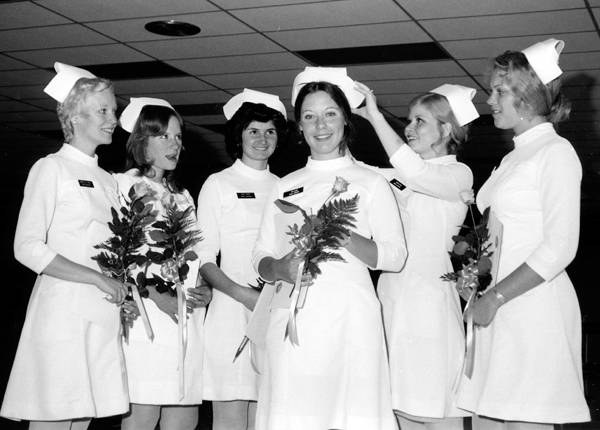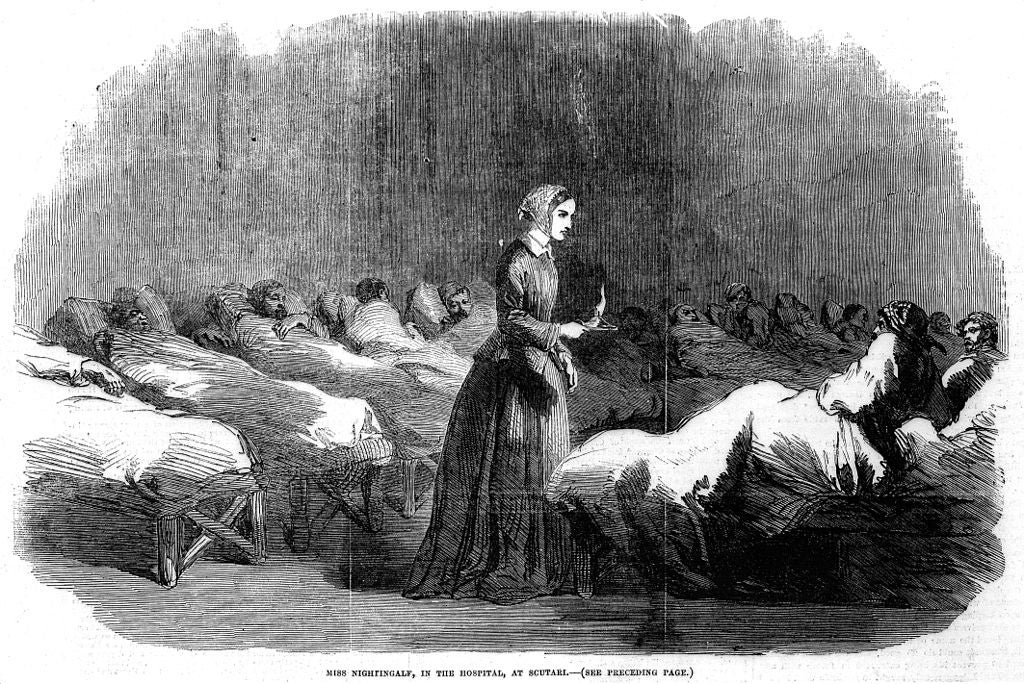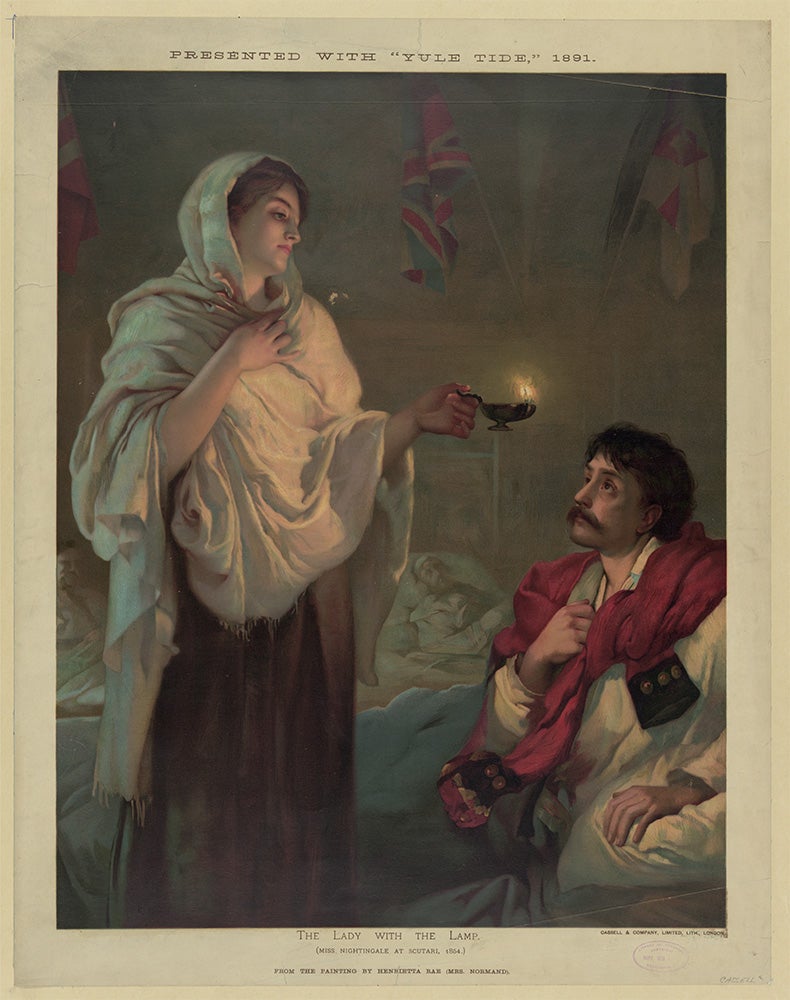Convocation is an opportunity for nursing graduates to share their excitement and academic accomplishments with faculty, staff, fellow students, family and friends at a special ceremony.
Every ceremony includes common elements – like student speeches and special awards – and common symbols – like regalia and an oil lamp. But why are these included?
Some are official moments to recognize individuals’ hard work or express gratitude, while others are steeped in decades of tradition like a cup of strong Earl Grey.
Read on to discover the elements of history that make Convocation what it is today.
Wondering what the difference is between Convocation, Graduation and Commencement? Check out our Convocation FAQ webpage for the answers.
History
Pinning ceremonies

Before Boise State held its Convocation Ceremony, we had a pinning ceremony.
The field of nursing has a long history of “pinning” ceremonies; these are attributed to the tradition of award ceremonies in which an individual receives a medal of distinction or merit that is pinned on.
Widely considered the founder of modern nursing, Florence Nightingale received the Royal Red Cross from Queen Victoria for her work during the Crimean War. Nightingale went on to award pins to particular students who excelled in her nursing school. The tradition eventually evolved as a symbol of all students’ completion, becoming a widespread practice by 1916.

Boise State’s ceremony is no longer referred to as a “pinning” since the nursing pins are not required regalia. However, students who decide to purchase the nursing pin can wear it proudly on their stoles during the event.
Lamp
The design of nursing pins and other regalia, like stoles, often centers around an oil lamp. But what’s the connection to nursing?
Although Disney brought the genie’s oil lamp into pop culture in 1992, Nightingale has claims to the symbol over a century earlier. She became known as the Lady with the Lamp thanks to correspondence during the Crimean War that was published in London’s ‘The Times’:
“When all the medical officers have retired for the night, and silence and darkness have settled down upon those miles of prostrate sick, she may be observed alone, with a little lamp in her hand, making her solitary rounds.”The Times

The excerpt was republished in ‘The Illustrated London News’ alongside a wood engraving that depicted Nightingale making rounds with an oil lamp. Henry Wadsworth Longfellow further immortalized Nightingale’s title in his 1857 poem ‘Santa Filomena’, referring to ‘a lady with a lamp.’
Artists continued to interpret her lamp to be the oil variety, as portrayed in another popular painting of Nightingale by Henrietta Rae in 1891.

Today we know from historical artifacts from the Crimean War that Nightingale’s lamp was most likely a paper lantern. But the imagery stuck.
Even today, Nurse Honor Guards light this form of lamp while honoring a nurse’s passing. At the end of their tribute, they extinguish the flame. In the Treasure Valley, the honor guard presents the family of the nurse with the lamp, similar to how military family members receive a folded American flag.
Apricot
Origins of academic colors
In terms of formal academic apparel, nursing stoles – the sash that drapes over graduates’ shoulders – are always apricot. But why not peach or plum, if we’re choosing stone fruit?
This answer is a bit convoluted. While academic apparel tradition dates back multiple centuries in the United Kingdom, America’s roots trace to the late 1880s.
A group of east coast universities standardized regalia and created the Intercollegiate Code of Academic Costume in 1895. The code specifies designs and colors based on varying universities, degree level and area of study.
The first colors
The original eight colors and corresponding areas of study were:
- Arts and Letters – White
- Fine Arts – Brown
- Law – Purple
- Medicine – Green
- Music – Pink
- Philosophy – Blue
- Science – Gold Yellow
- Theology – Scarlet
The colors were intended to remain broadly applicable within fields of study. For example, both graduates of chemistry and engineering would wear gold yellow, since they are areas of science.
Changes over time

So where did apricot come from?
The answer isn’t clear, but as academic discipline colors were added over the next century, nursing most likely received its unique designation around 1931.
So wear it loud and proud, as academics across the United States recognize it as a sign of your nursing education.
Oath
While reciting the Hippocratic Oath is a practice attributed to medical school students, Boise State’s Convocation includes a Nursing Oath. This oath does not originate with the Ancient Greeks, but its first draft was named in honor of Florence Nightingale. Although many versions exist today, often varying per school, the verbal recitation is symbolic of the weighty responsibility and aims of nurses.
All nurses present at Boise State’s Convocation are invited to renew their pledge to spare no effort to conserve life, to alleviate suffering and to promote health and dignity of all people.
Daisy Awards
In 2022, Boise State began awarding Daisy Awards during Convocation.
The Daisy Foundation partners with thousands of organizations across the globe to recognize outstanding nurses through this award. Anyone who interacts with the nurse can nominate them – patients and their families, peers, workplace colleagues and professors.

The Award for Extraordinary Faculty honors professors for their impact on the future of nursing. It celebrates their distinguished commitment to care and inspirational influence on both students and colleagues.
The Award for Extraordinary Nursing Student celebrates students who have gone above and beyond in the semester, demonstrating dedication to compassionate care, leadership and advocacy.
Boise State’s winners receive a small sculpture and their names are engraved on a plaque in the School of Nursing.